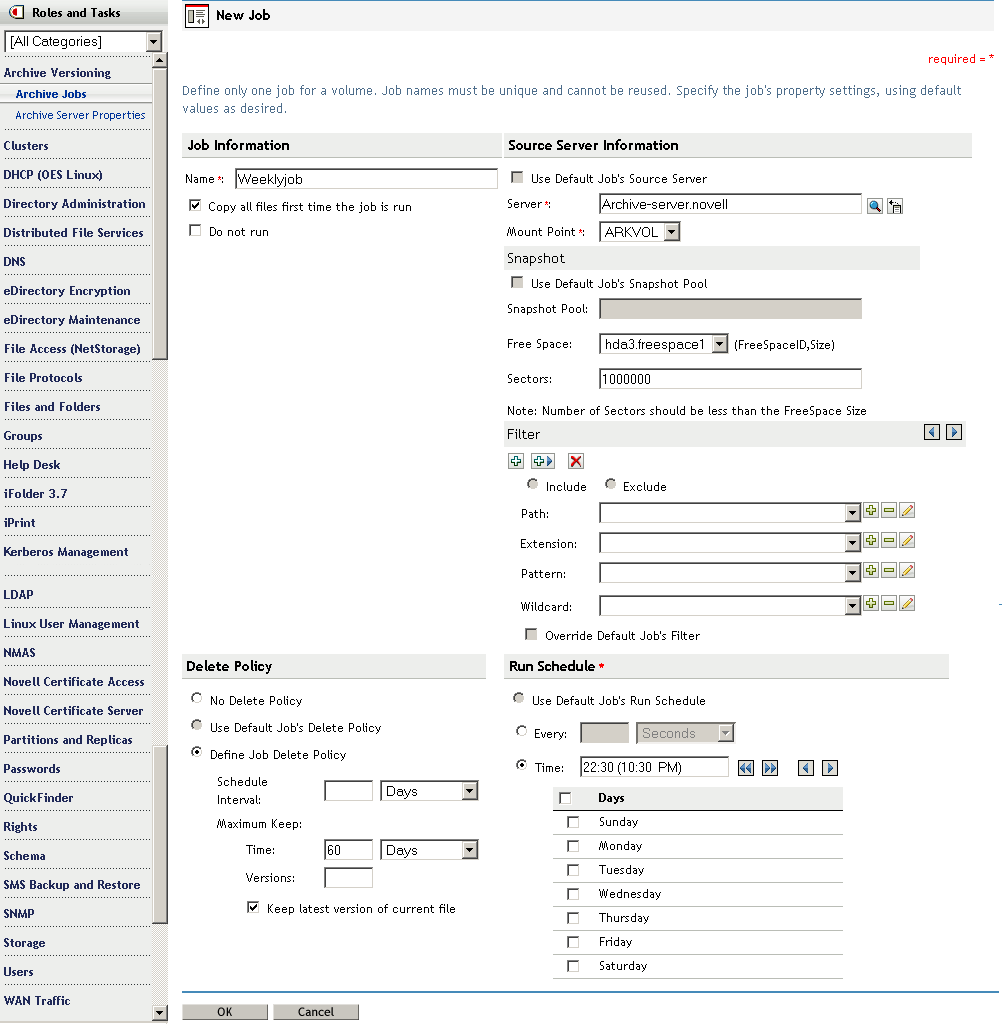7.6 Creating a Job
If your implementation plan calls for multiple archive servers, you must configure each with its own set of archive jobs.
Before you configure individual jobs, make sure you have configured the following information:
-
Archive Server Information: Configure basic information for your archive server. For information, see Section 7.3, Configuring or Viewing Archive Server Properties.
-
Default Job Settings: Default settings can optionally be used by any job on the archive server. Each job can optionally use one or more of the defaults that are set; each job’s usage is independent of other jobs.
To use the defaults, you must set default job settings before the job runs. (In Roles and Tasks, expand the Archive Versioning role, select Archive Server Properties, the select Default Job Settings.) For information, see Section 7.4, Configuring Default Job Settings.
To create a job:
-
In iManager, expand Archive Versioning, then click Archive Jobs.
-
Select the archive server you want to manage, then wait for the page to refresh.
For information, see Section 7.2, Configuring Archive Volume.
-
Select the Jobs tab.
-
Click New to open the Create New Job page.
-
Specify the property settings to use when archiving file versions for a specified volume.
For information about property settings, see Section 7.5, Configuring Job Properties.
You must at least specify a job property or use the default job property for all required fields before the job can run. Required fields are marked with an asterisk (*).

-
When you are done, click OK to save your changes, or click Cancel at any time to discard them.
The job is saved only if all required fields are completed and all settings are valid.
If necessary, correct any missing or invalid information, then click Apply. For information about annotations for missing or invalid information, see Section 7.7.1, Correcting Missing or Invalid Information.
-
The Archive Jobs window lists the scheduled job.

After configuring a job, you can access file versions using NSS File Version Utility or Web-based Archive function using Novell NetStorage.